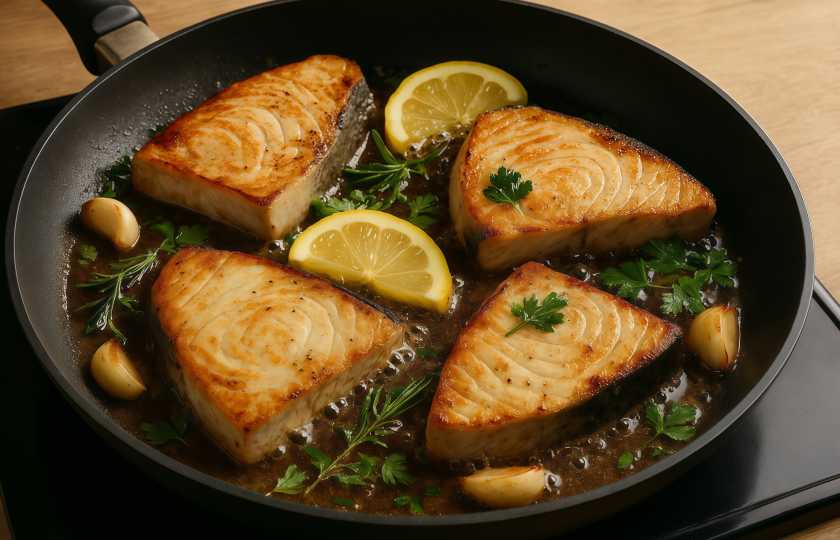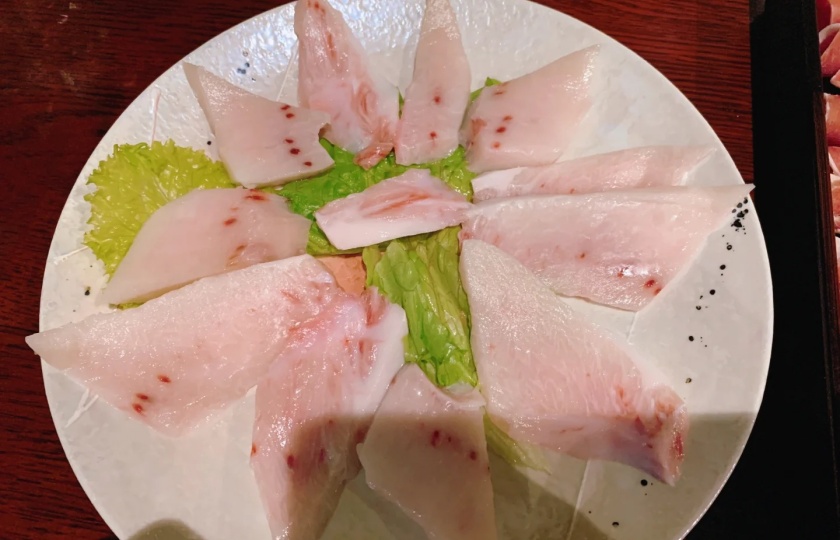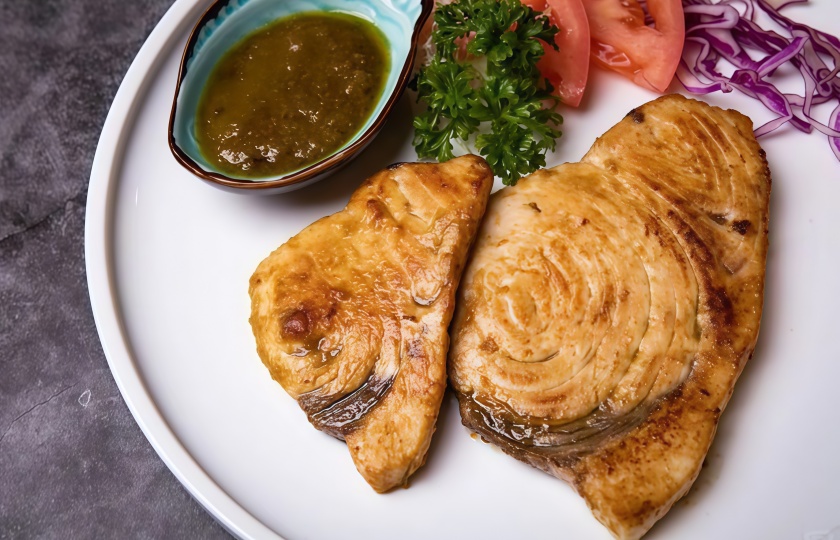Easy Steps: How To Cook Swordfish Nuggets Recipes

What is the best method of cooking swordfish?
Swordfish is suitable for high - temperature and quick cooking so that the meat doesn't easily become dry and tough. My go - to method is pan - frying. Here are the steps:
Step 1: Prepare the fish steaks
Choose the middle part with uniform thickness and cut it into slices about 2 centimeters thick. Pat the surface dry with kitchen paper, sprinkle a little salt and black pepper on both sides, and let it sit for 5 minutes. Let it come to room temperature in advance so that it heats up more evenly when frying.
Pan - frying techniques
Use a cast - iron pan or a thick - bottomed stainless - steel pan. Heat it over medium - high heat until it starts to smoke slightly. Pour in a spoonful of olive oil. When you put the fish steak in the pan, you should hear a sizzling sound immediately. First, fry the skin - side for 2 minutes. After the edges turn golden, flip it over and fry the other side for 1 minute and 30 seconds. After turning off the heat, squeeze some lemon juice and sprinkle some fresh thyme leaves.
Can I bake swordfish nuggets in the oven?
You can bake swordfish nuggets in the oven, and the result is no worse than frying. I've tried the method of baking at a high temperature for a short time. This can not only keep the fish moist but also give the outer layer a slightly charred aroma, which is especially suitable for making a quick dinner on weekdays.
Cut the swordfish into cubes about three centimeters on each side and blot the water dry with kitchen paper. For simple seasoning, mix together garlic powder, paprika, and a little olive oil, and marinate for just ten minutes. Line the baking sheet with baking paper to prevent sticking. Arrange the swordfish cubes with space in between and don't stack them, or they will release too much water.
Preheat the oven to 220 degrees Celsius and bake the swordfish cubes in the middle rack for 8 to 10 minutes. There's no need to flip them halfway through, but it's best to check around the fifth minute to see if the edges are slightly curling up. This is a sign that the fish is cooked through. After taking out the swordfish, sprinkle some fresh chopped dill or parsley. When eaten while still hot, the outer skin will have a bit of crispness.
Note that the thickness of the swordfish cubes should be uniform. If they are too thin, they are likely to dry out during baking. If you prefer an even crispier texture, you can coat the surface with a thin layer of breadcrumbs mixed with Parmesan cheese, but reduce the baking time by two minutes to avoid burning. It goes well with tzatziki sauce or avocado puree.

Is swordfish good in the air fryer?
Swordfish tastes great when cooked in an air fryer. Making swordfish cubes in an air fryer is extremely convenient, and the result is crispier than when using an oven. I've tried it several times and here are some tips:
Proper preparation of the swordfish cubes
Cut the swordfish into cubes about 2.5 centimeters in size. If the cubes are too thin, they'll dry out easily. Marinate the cubes with ginger slices and cooking wine for 15 minutes to remove the fishy smell. After draining, smear a little olive oil on them. You can add some paprika if you like a spicy flavor.
Control of temperature and time
Preheat the air fryer to 200 degrees Celsius for 3 minutes. Line the basket with parchment paper to prevent sticking. Spread the swordfish cubes in a single layer without overlapping. Fry at 180 degrees Celsius for 8 minutes first, then pull out the basket, flip the cubes, and fry for another 5 minutes. Stop when you see golden spots on the surface, as the residual heat will continue to color the swordfish.
I've tried frying swordfish cubes coated with crushed cornflakes. Although it doubles the crispness, the coating tends to fall off. Frying the swordfish in its original form and then dipping it in sauce is a cleaner option. Compared with using an oven, the air fryer reduces the cooking time by one - third, and the surface is drier and more fragrant. Squeeze some lime juice on the swordfish after taking it out of the air fryer. It enhances the flavor. Pairing it with a kale salad can just cut through the greasiness.
Should you wash swordfish before cooking?
No need to wash. The correct way is to dry it.
Just thoroughly blot the surface moisture with kitchen paper. A wet fish will splatter oil when frying and be difficult to brown when baking. If there is a silvery film on the surface of the fish, there's no need to remove it. It will naturally melt after high - temperature cooking.
The key to getting rid of the fishy smell lies in pre - treatment.
If you're bothered by the fishy smell, you can gently smear lemon juice or cooking wine on the surface, let it sit for 5 minutes, and then blot dry again. The swordfish steaks in sealed packages bought from the supermarket are usually already clean. Over - rinsing will disperse the fish meat fibers.

What are the best seasonings for swordfish?
I've found that these three combinations are the least likely to go wrong: lemon and garlic in the Mediterranean style, ginger, scallions and soy sauce in the Asian style, and lime and chili in the South American style.
Cut the swordfish into steaks about half a centimeter thick. Give it a simple massage with coarse salt and freshly ground black pepper as a base. For an advanced version, you can mix in chopped fresh rosemary and orange zest, which can not only get rid of the fishy smell but also add a fruity aroma. For those who like strong flavors, mix Dijon mustard with honey into a paste and spread it on the surface. After baking, it will form an amber - colored crispy skin.
The combination of smoked paprika and cumin powder is surprisingly suitable, especially when paired with the air - fryer method. When the fish oil comes into contact with the high - temperature spices, it will emit an aroma similar to that of a barbecue stand. If you are making sashimi - grade fresh swordfish sashimi, thinly brush a layer of wasabi paste mixed with yuzu juice, refrigerate for ten minutes and then slice it for the best flavor.
Avoid using overly pungent seasonings such as star anise or cloves. In terms of sauces, sour and spicy sauces like Thai green sauce or Argentine chimichurri can neutralize the greasiness of swordfish. Finally, remember that all seasonings should be applied after the fish surface is completely dry. Spices won't stick well to wet fish.

How do you know when swordfish is cooked?
If you use a food thermometer, insert it into the thickest part of the fish. When the temperature reaches around 63 degrees Celsius, the swordfish is cooked. If the temperature exceeds 70 degrees Celsius, the texture of the meat will become significantly tougher.
When pan - frying or baking, pay attention to the edges of the swordfish steak. When small golden cracks appear, it indicates that the cooking heat is just right.
The best taste is achieved when the fish changes from translucent to white, with a little pink remaining in the center. At this point, remove the fish from the heat immediately, as the residual heat will continue to cook it. Gently push the swordfish steak with the side of a fork. The ideal state is when the outer layer feels firm, but the inside bounces back slightly.。
How to select fresh swordfish pieces?
When selecting swordfish steaks, choose those with a bright silver - gray color and a pearly luster. If the color turns yellow or there is a white, misty appearance, it indicates that the fish has been dehydrated for too long.
Gently press the surface with your finger. The best - quality fish will bounce back immediately. Avoid buying fish that leaves an indentation or oozes juice when pressed. The smell of fresh saltwater fish should be a faint, salty, sea - like aroma. Avoid fish with a pungent sour smell or an ammonia - like odor at all costs.
Pay special attention to the dark red bloodline on the side of the fish. A fresh and clear bloodline indicates that the fish was recently caught. If the fish skin is intact, gently rub it with the back of your hand. There should be a slight resistance. If it feels slippery and shiny, the fish may have been soaked in chemicals. If you don't plan to cook the fish right away after bringing it home, wrap it tightly in plastic wrap and refrigerate it for no more than 8 hours.























